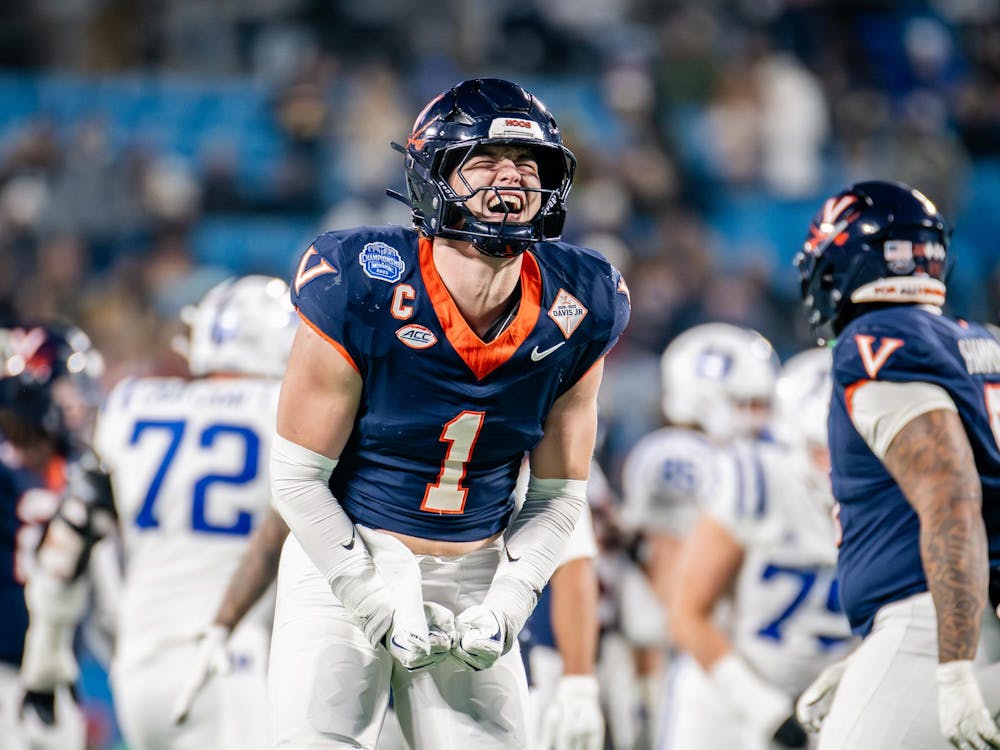In "The Art of War," Sun Tzu wrote, "If you know the enemy and know yourself, you need not fear the result of a hundred battles." Others may interpret Tzu's words differently, but in my mind, he was speaking directly to the 2010-11 Virginia men's basketball team and its fans. For yes, ladies and gentlemen, we are indeed in the midst of a great battle: the quest to go deep into two postseason tournaments. And our enemy? The elusive three-point shot.
After witnessing the past several games come down to Virginia's ability to hit shots from behind the arc, it should come as no shock to anyone that the Cavaliers will go as far this season as the three-ball will carry them. So, in the spirit of Sun Tzu, I think we all need to learn a little bit more about our enemy.
To start, hop in the DeLorean with me and let's take a quick trip through basketball history. The three-point shot first entered the game on a permanent basis during the early 1960s. Abe Saperstein's American Basketball League, which failed to make it past its second season, was the first league to adopt the three-point line in 1961. The arc didn't achieve full scale prominence, however, until the American Basketball Association was founded in 1967 and adopted the three-pointer as part of its plan to challenge the National Basketball Association for audiences. The NBA added the arc during the late-1970s, and by the mid-1980s, the NCAA had followed suit with a standardized 19-foot, 9-inch three-point line. Since then, the line has undergone several changes, but it now has a radius of 20-feet, 9-inches for all official NCAA men's basketball games. OK, so we now know our enemy, but what does all this mean for the Cavaliers?
Currently, Virginia is tied for No. 20 in the nation for three-point average with a .388 percentage from beyond the arc. For comparison's sake, let's see how that matches up with some past NCAA champions. Last year's winner, the Duke, finished the season ranked No. 24 in the nation with a .385 percentage. The year before that, North Carolina shot .376 from downtown - good for No. 45 in the nation. In 2008, the Kansas Jayhawks ranked No. 13 in the nation with a .398 three-point percentage, and the year before that, Florida shot a blistering .408 from behind the arc to finish number No. 10 in that category. So if history is any indication, the Cavaliers do shoot the three ball well enough overall to make a run in the both the ACC and NCAA tournaments.
But, as we all know, numbers can be deceiving. Anyone can tell that there is definitely something different between the Cavaliers and these other teams with whom their three-point numbers match up so favorably. The difference between Virginia and these proven winners is that the Cavaliers are far more dependent on the three-pointer than any of these other past champions.
Let's take a look at rebounding for further comparison. Most basketball experts will agree that the ability to control the boards is a major key to a winning basketball formula. Of all the teams previously mentioned, Florida ranked the lowest with 37.2 rebounds per game in its championship season. In 2009, the Tar Heels finished second in the nation with more than 42 boards per contest. Meanwhile, this year's Virginia squad averages a less-than-impressive 31.3 rebounds per game - a number good for No. 315 out of the 346 Division I programs. This lack of low post dominance forces the Cavaliers to rely heavily on their three-point shooting. Case in point: during the Cavaliers' four ACC wins this year, they managed a .451 average from behind the arc, while during their eight conference losses, they only shot a .377 clip from downtown.
So where do all these numbers leave us? Unfortunately, right back where we started. Simply put, when the Cavaliers make their three-pointers, they can play with anybody, but if they leave their touch at home, they'll have trouble beating a drum. For better or for worse, the Cavaliers will live and die by the three. Injuries to key big men such as Mike Scott and Will Sherrill mean that the Cavaliers cannot win playing traditional inside-out basketball, with the offense centered around a dominant inside presence. As much as we all want to see the team be more aggressive inside and stop pulling up for so many three-pointers, that's just not going to happen. I'm not saying this is the best formula for winning basketball, but it's the only one the Cavaliers have and they need to stick to it. Virginia's postseason hopes rest behind that arc - 20-feet, 9-inches away from the hoop.
The Cavaliers know their enemy, and they know themselves. Sun Tzu said that would be enough to win one hundred battles, but for Virginia, the question is if it's enough to win a tournament.






